Monster Hunter Arms: An Epic Tale of Evolution
 Monster Hunter's renowned for its diverse weapon roster and engaging gameplay. But did you know even more weapons exist, absent from recent titles? This exploration delves into the history of Monster Hunter weaponry.
Monster Hunter's renowned for its diverse weapon roster and engaging gameplay. But did you know even more weapons exist, absent from recent titles? This exploration delves into the history of Monster Hunter weaponry.
← Return to Monster Hunter Wilds' main article
A Weapon History
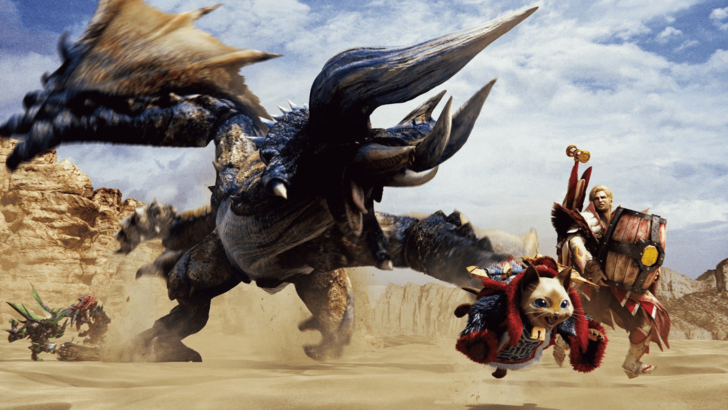 Monster Hunter's legacy spans over two decades, beginning in 2004. Its varied weapon types are a key element. Monster Hunter Wilds boasts fourteen distinct weapon classes, each possessing unique strengths, weaknesses, movesets, and mechanics.
Monster Hunter's legacy spans over two decades, beginning in 2004. Its varied weapon types are a key element. Monster Hunter Wilds boasts fourteen distinct weapon classes, each possessing unique strengths, weaknesses, movesets, and mechanics.
Significant evolution distinguishes the original Great Sword from its modern counterpart. Furthermore, older weapons, previously unreleased in the West, add to the franchise's rich history. Let's examine Monster Hunter's weapon evolution.
First Generation
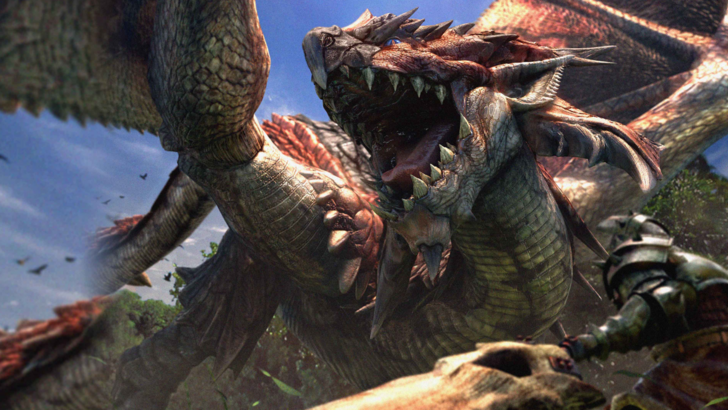 These weapons debuted in the original Monster Hunter and its iterations. These foundational weapons have endured, evolving with refined movesets and mechanics.
These weapons debuted in the original Monster Hunter and its iterations. These foundational weapons have endured, evolving with refined movesets and mechanics.
Great Sword
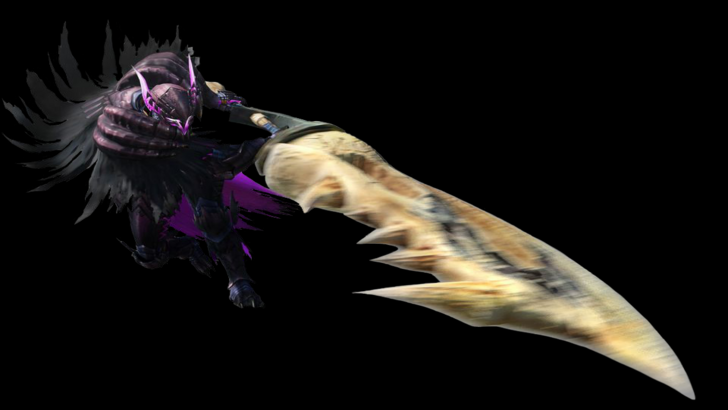 Arguably the franchise's most iconic weapon, the Great Sword's debut was in 2004. Known for its immense damage, this power comes at the cost of slow attack speed and movement. Its heavy blade can serve as a shield, consuming stamina and sharpness.
Arguably the franchise's most iconic weapon, the Great Sword's debut was in 2004. Known for its immense damage, this power comes at the cost of slow attack speed and movement. Its heavy blade can serve as a shield, consuming stamina and sharpness.
Early gameplay centered on hit-and-run tactics and precise spacing. Though combos were possible, slow animations hindered their effectiveness. A unique feature was the increased damage inflicted by striking with the blade's center.
Monster Hunter 2 introduced the iconic Charged Slash, a multi-level charge attack culminating in a devastating swing. This remains a defining feature.
Subsequent games refined charging mechanics, adding finishers and improving combo fluidity, despite maintaining its inherent slowness. Monster Hunter World's shoulder tackle allowed for quicker access to charged attacks.
The Great Sword offers a low skill floor but a high skill ceiling. Mastering its timing and maximizing True Charged Slash damage separates proficient users from the average.
Sword and Shield
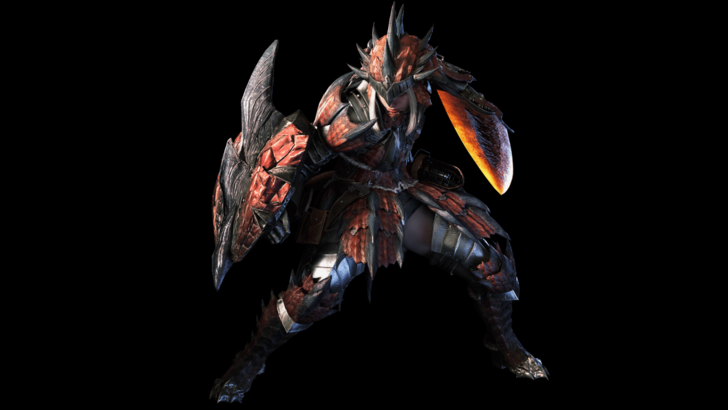 Embodying versatility, the Sword and Shield boasts a balanced design. While individual strikes deal moderate damage, it compensates with rapid combos, blocking, mobility, and utility. Initially considered a beginner weapon, its complexity has increased over time.
Embodying versatility, the Sword and Shield boasts a balanced design. While individual strikes deal moderate damage, it compensates with rapid combos, blocking, mobility, and utility. Initially considered a beginner weapon, its complexity has increased over time.
Early gameplay relied on quick slashes and combos, leveraging high mobility. Monster Hunter 2 enabled item usage while the weapon remained drawn.
Later iterations expanded the moveset, notably with shield bashes (Monster Hunter 3), backsteps and jumps (Monster Hunter 4), and Perfect Rush/aerial finishers (Monster Hunter World/Rise).
Despite its short range and moderate damage, the Sword and Shield is a jack-of-all-trades. Infinite combos, quick attacks, backstep evasiveness, powerful finishers, and a reliable block make it a deceptively deep weapon.
Hammer
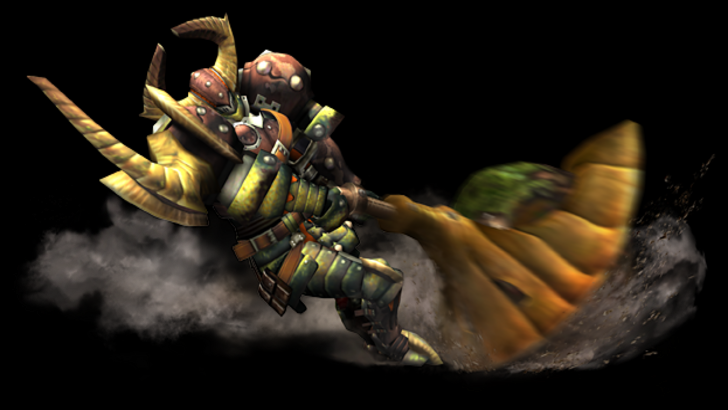 One of two blunt weapons (dealing impact, not cutting damage), Hammers excel at breaking parts, particularly heads. Post-Monster Hunter 2, the Hammer became synonymous with KO potential.
One of two blunt weapons (dealing impact, not cutting damage), Hammers excel at breaking parts, particularly heads. Post-Monster Hunter 2, the Hammer became synonymous with KO potential.
Gameplay resembled the Great Sword's hit-and-run style, but with surprisingly high mobility and no blocking. Its unique charge mechanic allowed movement during charging.
Moveset changes were incremental until Monster Hunter World and Rise. Big Bang and Spinning Bludgeon significantly enhanced offensive capabilities.
Two modes, Strength and Courage, were introduced, altering charge attacks and effects. Effective Hammer use requires understanding mode switching based on monster matchups and maintaining charge while moving.
The Hammer's objective is straightforward: target the head for KOs. This simplicity belies the skill required to maximize damage using charged attacks and combo finishers.
Lance
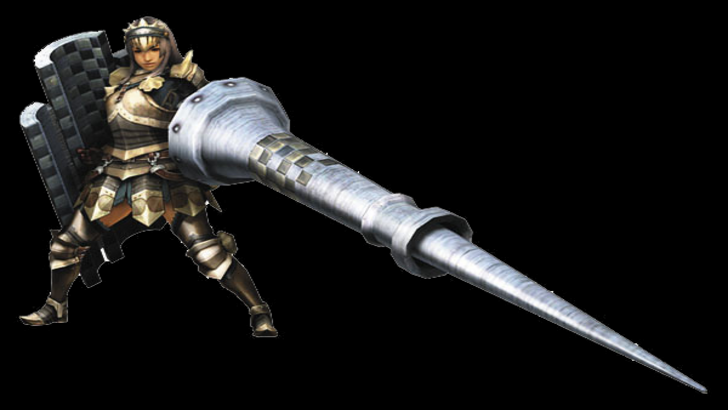 The Lance epitomizes the phrase "a good offense is a great defense." Its long reach and large shield provide exceptional defense. The shield blocks most attacks, and with proper skills, even normally unguardable ones. Despite limited mobility and attacks, its damage output is substantial.
The Lance epitomizes the phrase "a good offense is a great defense." Its long reach and large shield provide exceptional defense. The shield blocks most attacks, and with proper skills, even normally unguardable ones. Despite limited mobility and attacks, its damage output is substantial.
Gameplay resembles an outboxer, poking at range while protected. Core attacks are thrusts (forward and upward), chainable up to three times. A counter mechanic was added, further reinforcing its defensive style. Running charge and shield bash attacks closed the distance.
Often perceived as "boring" due to its unflashy animations, the Lance rewards players for standing their ground. It transforms the hunter into a tank, surpassing even the Gunlance in defensive capabilities.
Light Bowgun
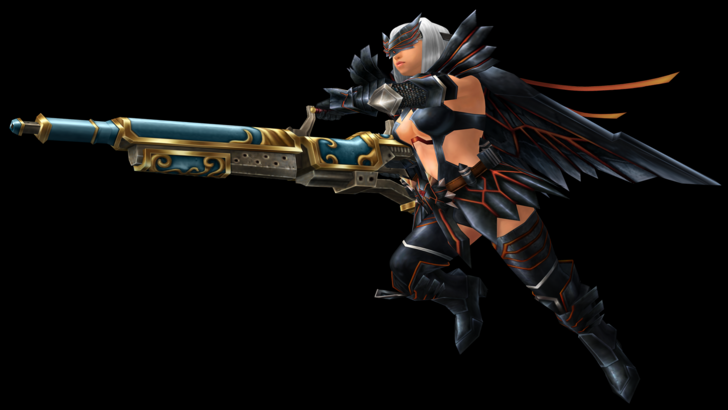 A ranged weapon from the first generation, the Light Bowgun appears in every game. Its mobility and fast reload speed make it relatively easy to handle and safer than heavier options. It boasts faster reload, sheathing, and dodging.
A ranged weapon from the first generation, the Light Bowgun appears in every game. Its mobility and fast reload speed make it relatively easy to handle and safer than heavier options. It boasts faster reload, sheathing, and dodging.
The trade-off for mobility is limited firepower compared to its heavier counterpart. Customization options include barrels, silencers, and scopes.
While lacking the heavier Bowgun's ammunition variety, the Light Bowgun's Rapid Fire capability allows it to outperform other ranged weapons due to ease of use.
Monster Hunter 4 introduced "Critical Distance," adding depth to ranged combat. Optimal damage depended on ammunition type.
Monster Hunter World introduced Wyvernblast (ground bombs) and a slide maneuver, further enhancing its run-and-gun style.
The Light Bowgun has evolved beyond a "weaker" version of the Heavy Bowgun, offering a simple yet robust design that remains easier to use while keeping pace in mechanics and specialization.
Heavy Bowgun
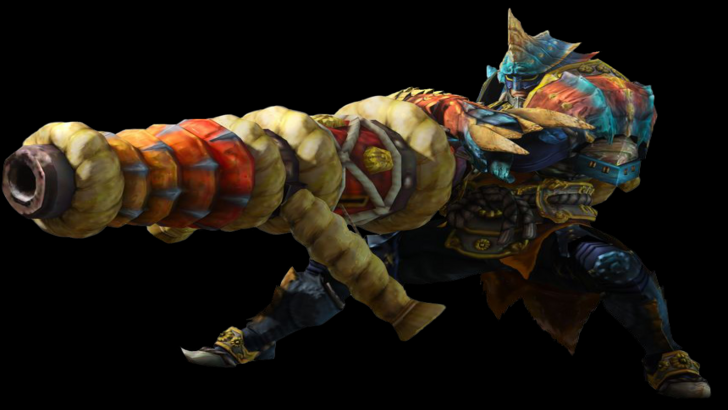 The Heavy Bowgun is the premier ranged weapon of the first generation, delivering high damage and utilizing specialized ammunition. Its size and weight restrict mobility.
The Heavy Bowgun is the premier ranged weapon of the first generation, delivering high damage and utilizing specialized ammunition. Its size and weight restrict mobility.
While the Light Bowgun prioritizes mobility, the Heavy Bowgun offers flexibility in ammunition types. Its slow movement (walking only while drawn) is offset by its powerful arsenal. Customization options are available, and it can equip a shield.
Its core design remained largely unchanged, serving as powerful artillery or support. Low mobility, however, can lead to downtime if the monster focuses its attacks.
Monster Hunter 3 introduced Siege Mode for continuous firing without reloading. Monster Hunter World added Wyvernheart (minigun) and Wyvernsnipe (powerful single-shot) special ammo, requiring strategic ammunition management.
The Heavy Bowgun's strength lies in powerful ammunition like Cluster and Crag, enabling efficient monster takedowns. While minor changes have occurred (dodge roll and attachments), its core identity remains: big gun, big bullets.
Dual Blades
 Among the flashiest weapons, the Dual Blades prioritize speed and are exceptionally effective at inflicting status ailments and elemental damage due to their multi-hit attacks. Interestingly, despite being a first-generation weapon, they were only introduced in the Western release of Monster Hunter.
Among the flashiest weapons, the Dual Blades prioritize speed and are exceptionally effective at inflicting status ailments and elemental damage due to their multi-hit attacks. Interestingly, despite being a first-generation weapon, they were only introduced in the Western release of Monster Hunter.
Speed and fluid combos define the Dual Blades, surpassing the Sword and Shield in raw offensive power. Individual attacks are weak, but their rapid succession delivers significant damage.
Demon Mode, a temporary damage boost with enhanced attacks and maneuvers, consumes stamina.
Monster Hunter Portable 3rd/3 Ultimate introduced the Demon Gauge, filling with each attack in Demon Mode. A full gauge activates Archdemon Mode, offering powered-up attacks and maneuvers without stamina drain.
This significantly altered gameplay, incentivizing sustained Archdemon Mode. New attacks were added to both powered-up states. The Demon Dash, a unique movement tool, was enhanced by Adept Hunter Style in Monster Hunter Generations Ultimate, providing a perfect dodge with damage and movement buffs.
While core gameplay remains consistent, refinements and additions have enhanced its offensive capabilities. Archdemon Mode's introduction revolutionized its potential.
Second Generation
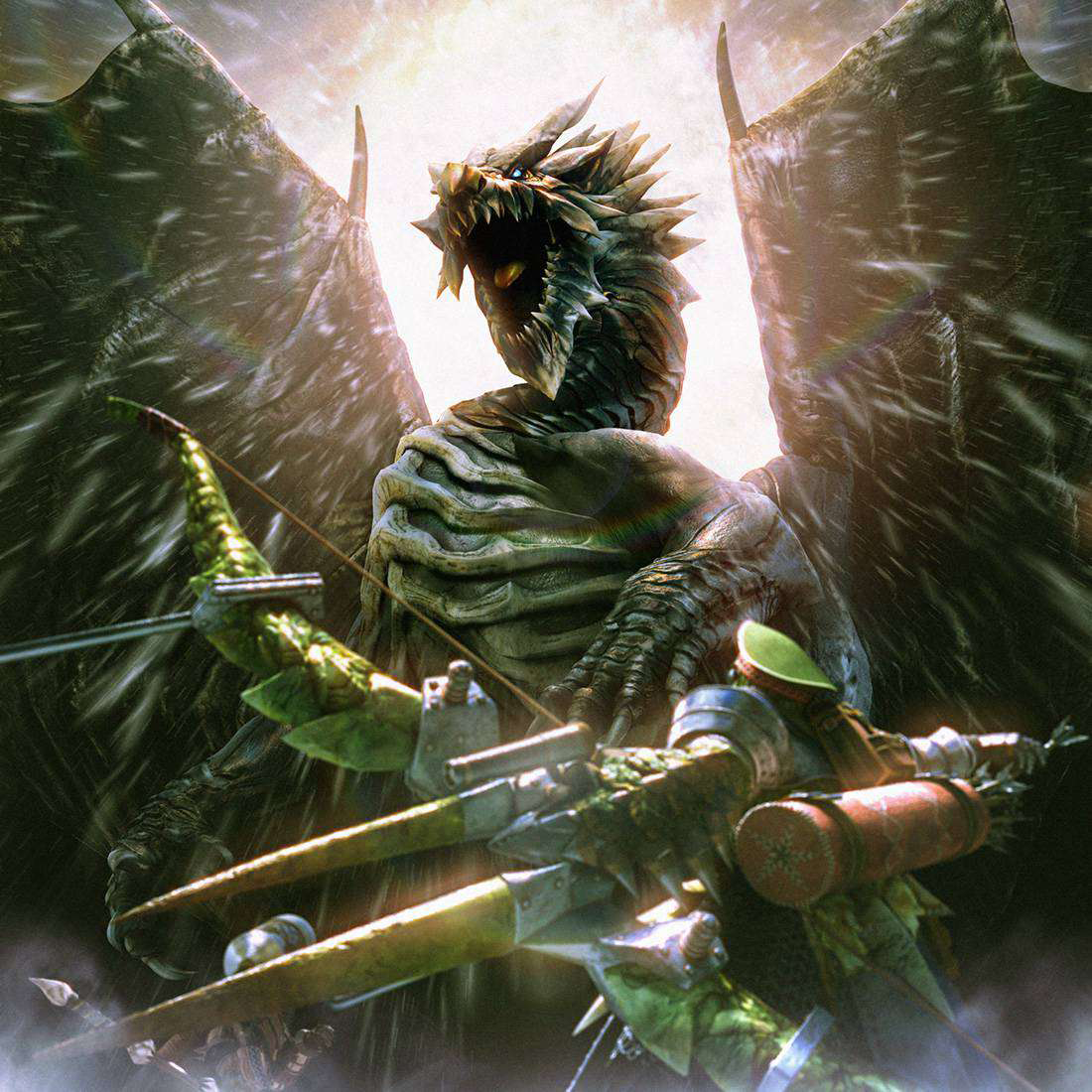 Introduced in the second generation, these weapons are akin to their first-generation counterparts, yet possess unique movesets and mechanics.
Introduced in the second generation, these weapons are akin to their first-generation counterparts, yet possess unique movesets and mechanics.
Long Sword
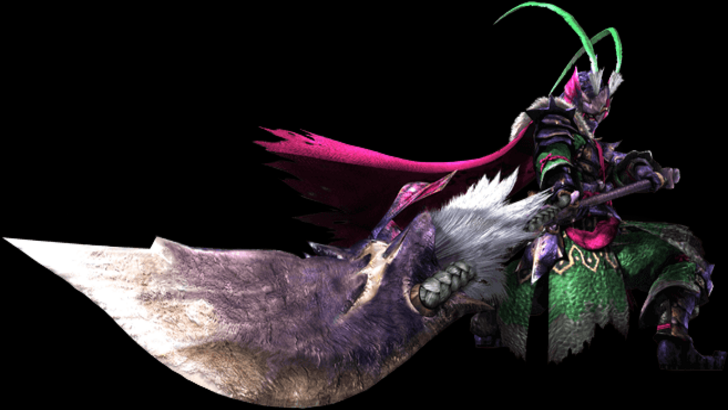 Known for fluid combos, high damage, and refined mechanics, the Long Sword's aesthetic resembles katanas. Introduced in Monster Hunter 2, it shares similarities with the Great Sword (slashing damage, high damage output) but boasts superior mobility and more fluid combos. Blocking is absent.
Known for fluid combos, high damage, and refined mechanics, the Long Sword's aesthetic resembles katanas. Introduced in Monster Hunter 2, it shares similarities with the Great Sword (slashing damage, high damage output) but boasts superior mobility and more fluid combos. Blocking is absent.
The Spirit Gauge, filled by landing attacks, activates the Spirit Combo, a powerful damage dealing sequence.
Monster Hunter 3 added Spirit Roundslash, a finisher that increases the Spirit Gauge to three levels (white, yellow, red), each granting stronger attack buffs.
Monster Hunter World's popularity stemmed from a new finisher (Spirit Thrust Helm Breaker) and the Foresight Slash, a parry attack usable with or without the Spirit Gauge (offering invulnerability when used with the gauge).
Iceborne introduced Iai Stance, enabling Iai Slash and Iai Spirit Slash (a parry attack).
The Long Sword's combo-oriented design has evolved into a counter-based style, leveraging parries and counters to reach peak potential. The Spirit Gauge remains central, requiring seamless integration with dodging and countering.
Hunting Horn
 Primarily a support weapon, the Hunting Horn is a blunt weapon introduced in Monster Hunter 2. Its Recital mechanic allows playing notes to activate beneficial effects (attack/defense buffs, healing).
Primarily a support weapon, the Hunting Horn is a blunt weapon introduced in Monster Hunter 2. Its Recital mechanic allows playing notes to activate beneficial effects (attack/defense buffs, healing).
Like the Hammer, it deals impact damage, targeting the head for stuns. Lower overall damage is offset by its support capabilities.
Changes focused on the Recital mechanic until Monster Hunter Rise. Monster Hunter 3 Ultimate allowed note playing during attacks, improving fluidity. Monster Hunter World introduced song queuing, streamlining buff activation. Echo Notes (Iceborne) provided area-based buffs.
Monster Hunter Rise significantly overhauled the weapon, simplifying song activation (double-tapping a button) and automating buffs. This change, while praised for its simplicity, was controversial, with some criticizing the loss of complexity.
Gunlance
 A hybrid of Lance and Bowgun, the Gunlance (introduced in the second generation) combines a large shield and lance with explosive shelling. Ammunition is unlimited, replenishing upon reloading.
A hybrid of Lance and Bowgun, the Gunlance (introduced in the second generation) combines a large shield and lance with explosive shelling. Ammunition is unlimited, replenishing upon reloading.
Visually similar to the Lance, gameplay differs. Attacks are slashing, not piercing. Finishers include Wyvern's Fire (a charged explosive attack). Shelling types affect attack explosions.
Monster Hunter 3 enhanced its aggressive style with quick reload (allowing infinite combos), Full Burst (a downward slam), and additional shell charging.
Monster Hunter X introduced the Heat Gauge, increasing physical attack damage with shelling usage, but overheating locks the gauge temporarily.
Monster Hunter World added Wyrmstake Shot (an impaling explosive attack).
The Gunlance's unique reloading mechanics and balanced offensive approach, requiring careful management of shelling, set it apart.
Bow
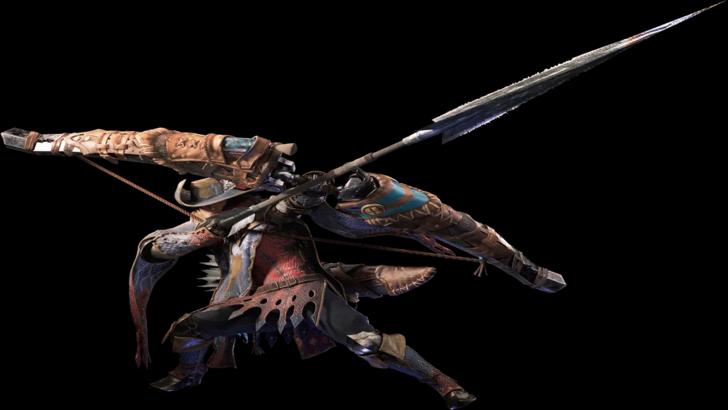 The most agile ranged weapon, the Bow (Monster Hunter 2) excels in close-to-mid-range combat, utilizing mobility and combos. It functions similarly to melee weapons. Chargeable attacks increase arrow count.
The most agile ranged weapon, the Bow (Monster Hunter 2) excels in close-to-mid-range combat, utilizing mobility and combos. It functions similarly to melee weapons. Chargeable attacks increase arrow count.
Hit-and-run tactics are employed, targeting weak points and leveraging multi-hit attacks for elemental damage. Coatings enhance damage or inflict status effects.
Mobility and fluid combos are its strengths. Older games featured Shot Types (removed for simplicity in newer games).
Monster Hunter World made the moveset universal and combo-heavy, integrating Shot Types into the base moveset. Close-Range Coating became infinite.
Monster Hunter Rise reintroduced Shot Types, tied to charge levels.
The Monster Hunter World overhaul enhanced its aggressive, combo-heavy style, distinguishing it from Bowguns' point-and-shoot gameplay.
Third and Fourth Generation
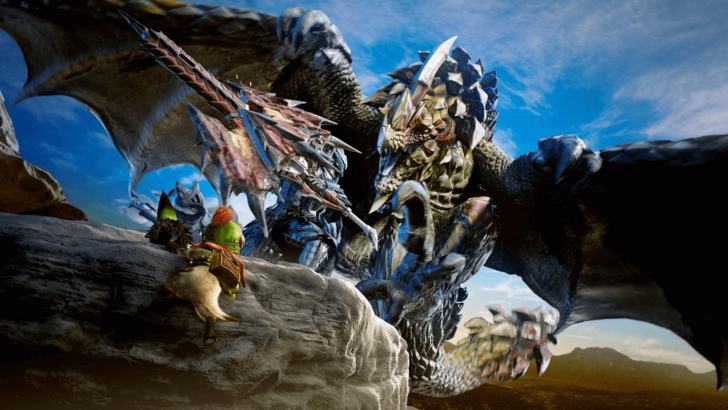 These weapons (Monster Hunter 3 and 4) are notable for their morphing abilities and unique mechanics.
These weapons (Monster Hunter 3 and 4) are notable for their morphing abilities and unique mechanics.
Switch Axe
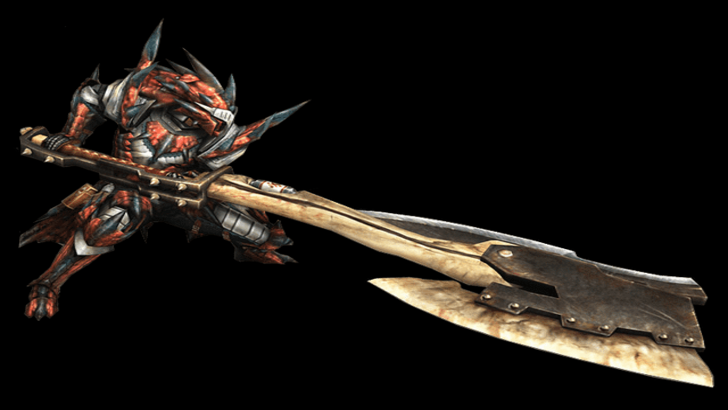 The Switch Axe (Monster Hunter 3) features Axe and Sword modes. Initially requiring a quest completion to unlock, it's now readily available.
The Switch Axe (Monster Hunter 3) features Axe and Sword modes. Initially requiring a quest completion to unlock, it's now readily available.
Gameplay balances both modes. Axe Mode offers range, mobility, and an infinite stamina-based combo. Sword Mode delivers higher damage, phial usage, and the Elemental Discharge finisher.
While core design remains consistent, morphing capabilities have improved. Monster Hunter World introduced Amped, empowering Sword Mode with phials and adding new transitioning attacks.
Monster Hunter Rise extended Amped to both modes, encouraging mode switching for maximum damage.
The Switch Axe's form-swapping mechanics and explosive combat flow make it a unique addition.
Insect Glaive
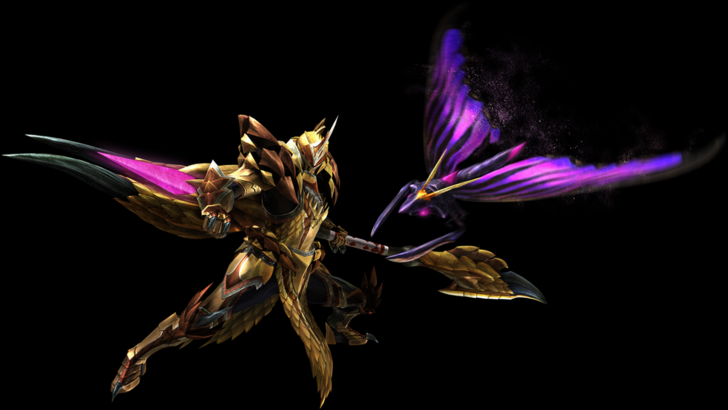 The Insect Glaive (Monster Hunter 4) specializes in aerial combat, utilizing a Kinsect (controlled insect) to collect essences for buffs. It excels at mounting monsters.
The Insect Glaive (Monster Hunter 4) specializes in aerial combat, utilizing a Kinsect (controlled insect) to collect essences for buffs. It excels at mounting monsters.
While the base moveset is unremarkable, collecting red, white, and orange essences grants attack, mobility, and defense buffs. Collecting all three provides stronger, non-resetting buffs.
Significant changes were minimal, aside from added attacks and finishers. Monster Hunter World: Iceborne's Descending Thrust provided a much-needed air-to-ground finisher.
Monster Hunter Rise simplified Kinsect upgrades, tying them to weapon level and introducing new Kinsect types (Normal, Assist, Powder, Speed).
Gameplay centers on rapid essence collection for maximum buff uptime.
The Insect Glaive's aerial prowess and buff system offer a unique and engaging playstyle.
Charge Blade
 Another transforming weapon (Monster Hunter 4), the Charge Blade is known for its versatility and powerful finishers. Sword Mode charges phials, while Axe Mode unleashes Amped Elemental Discharge. Its complexity makes it challenging to master.
Another transforming weapon (Monster Hunter 4), the Charge Blade is known for its versatility and powerful finishers. Sword Mode charges phials, while Axe Mode unleashes Amped Elemental Discharge. Its complexity makes it challenging to master.
Guard points are crucial for efficient phial charging. Phial types vary by weapon. Fluid combos and versatility are offset by the weapon's difficulty.
Mastering Guard Points allows for damage mitigation while maintaining offense. Understanding weapon transitions and monster behavior is essential.
The Charge Blade's balanced offense and intricate mechanics make it a rewarding, albeit challenging, weapon.
Future Weapons?
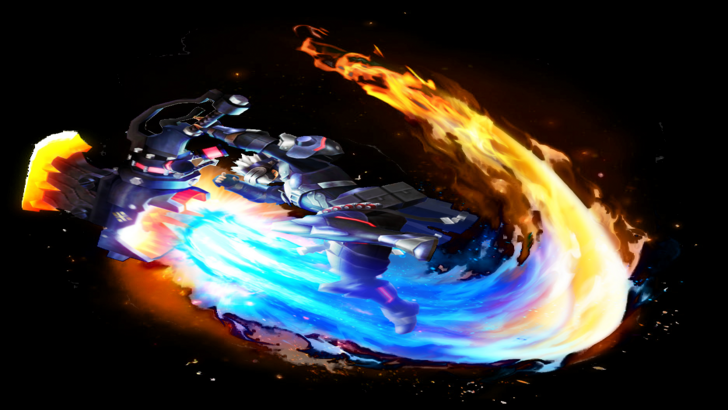 While Monster Hunter Wilds features fourteen weapons, more exist, unreleased in Western markets. Given the franchise's longevity, future installments may introduce new weapons or reintroduce previously omitted ones. The potential for further weapon additions promises to enhance the already compelling gameplay.
While Monster Hunter Wilds features fourteen weapons, more exist, unreleased in Western markets. Given the franchise's longevity, future installments may introduce new weapons or reintroduce previously omitted ones. The potential for further weapon additions promises to enhance the already compelling gameplay.
You may also like...

-
 Jan 27,25Roblox: Bike Obby Codes (January 2025) Bike Obby: Unlock Awesome Rewards with These Roblox Codes! Bike Obby, the Roblox cycling obstacle course, lets you earn in-game currency to upgrade your bike, buy boosters, and customize your ride. Mastering the various tracks requires a top-tier bike, and thankfully, these Bike Obby codes deliver
Jan 27,25Roblox: Bike Obby Codes (January 2025) Bike Obby: Unlock Awesome Rewards with These Roblox Codes! Bike Obby, the Roblox cycling obstacle course, lets you earn in-game currency to upgrade your bike, buy boosters, and customize your ride. Mastering the various tracks requires a top-tier bike, and thankfully, these Bike Obby codes deliver -
 Feb 20,25Where to Preorder the Samsung Galaxy S25 and S25 Ultra Smartphones Samsung's Galaxy S25 Series: A Deep Dive into the 2025 Lineup Samsung unveiled its highly anticipated Galaxy S25 series at this year's Unpacked event. The lineup features three models: the Galaxy S25, S25+, and S25 Ultra. Preorders are open now, with shipping commencing February 7th. Samsung's web
Feb 20,25Where to Preorder the Samsung Galaxy S25 and S25 Ultra Smartphones Samsung's Galaxy S25 Series: A Deep Dive into the 2025 Lineup Samsung unveiled its highly anticipated Galaxy S25 series at this year's Unpacked event. The lineup features three models: the Galaxy S25, S25+, and S25 Ultra. Preorders are open now, with shipping commencing February 7th. Samsung's web -
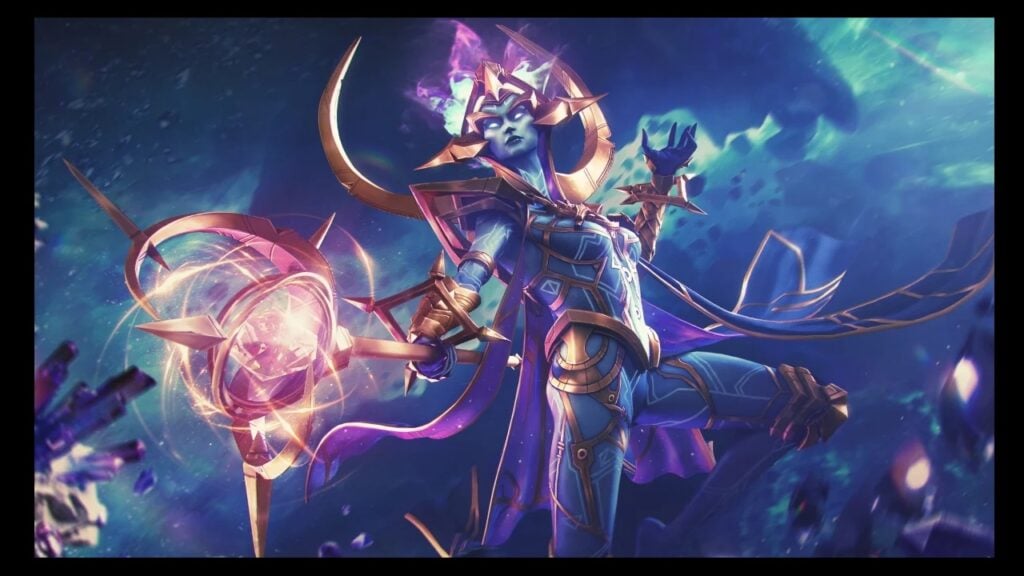 Jul 02,22Isophyne Debuts as Original Character in Marvel Contest of Champions Kabam introduces a brand-new original character to Marvel Contest of Champions: Isophyne. This unique champion, a fresh creation from Kabam's developers, boasts a striking design reminiscent of the film Avatar, incorporating copper-toned metallic accents. Isophyne's Role in the Contest Isophyne ent
Jul 02,22Isophyne Debuts as Original Character in Marvel Contest of Champions Kabam introduces a brand-new original character to Marvel Contest of Champions: Isophyne. This unique champion, a fresh creation from Kabam's developers, boasts a striking design reminiscent of the film Avatar, incorporating copper-toned metallic accents. Isophyne's Role in the Contest Isophyne ent -
 Jan 11,25Jujutsu Kaisen Phantom Parade: Tier List Revealed This Jujutsu Kaisen Phantom Parade tier list helps free-to-play players prioritize character acquisition. Note that this ranking is subject to change with game updates. Tier List: Tier Characters S Satoru Gojo (The Strongest), Nobara Kugisaki (Girl of Steel), Yuta Okkotsu (Lend Me Your Stren
Jan 11,25Jujutsu Kaisen Phantom Parade: Tier List Revealed This Jujutsu Kaisen Phantom Parade tier list helps free-to-play players prioritize character acquisition. Note that this ranking is subject to change with game updates. Tier List: Tier Characters S Satoru Gojo (The Strongest), Nobara Kugisaki (Girl of Steel), Yuta Okkotsu (Lend Me Your Stren
